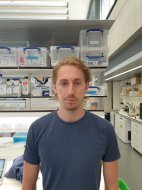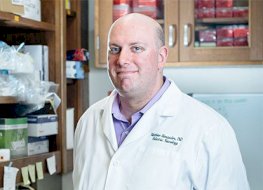
https://pubmed.ncbi.nlm.nih.gov/33407808/
The manuscript by Scaglioni and colleagues is an important recent paper in its assessment of the pathological effects following a 48-week administration of the exon 53-skipping phosphorodiamidate morpholino (PMO) compound golodirsen in the skeletal muscles of Duchenne muscular dystrophy (DMD) patients. The authors investigated the production of the golodirsen-derived dystrophin produced in DMD patients that received it and found a strong correlation between beta-dystroglycan immunofluorescent staining in muscle tissues that is associated to the amount of dystrophin-positive fibers. Interestingly, when the authors similarly compared the levels of dystrophin expression to fetal and developmental (f/d) myosins (markers for newly regenerative myofibers), they observed a significant negative correlation between the higher dystrophin-positive myofibers and the newly regenerated f/d myosin-positive myofibers. Additional comparisons between baseline and 48-week specimens revealed a similar correlation between the percentage of f/d positive myofibers and the change in dystrophin-expression levels. In summary, this is an important study in its inverse correlation between the restoration of dystrophin and the dystrophin-associated protein complex (DAPC) and the degeneration/regeneration histopathologies that are observed in DMD patients.

I completed my undergraduate and master’s degree at University College London in cellular and molecular biology. I then spent 2 years working for Prof Muntoni and Prof Morgan in the Dubowitz Neuromuscular Centre at UCL Great Ormond Street Institute of Child Health. My work focused primarily on developing new techniques for quantifying dystrophin and its associated protein complex in skeletal muscle biopsies for the assessment of clinical trial samples. I am now undertaking a PhD in cardiac developmental biology, funded by the British Heart Foundation at University College London.

Dr. Matthew Alexander obtained his PhD in Genetics and Development from the University of Texas Southwestern Medical Center at Dallas in the lab of Dr. Daniel Garry where he studied the roles of forkhead transcription factors in the regulation of muscle stem cells. In 2008 he joined the laboratory of Dr. Louis Kunkel (Harvard Medical School and Boston Children’s Hospital) as a postdoctoral fellow where his work focused on the roles of epigenetic and genetic modifiers of human neuromuscular diseases with an emphasis on Duchenne muscular dystrophy (DMD), myotonic dystrophy (DM), and Limb-girdle muscular dystrophy (LGMD). In 2013, Dr. Alexander was promoted to an Instructor in Pediatrics and Genetics and Genomics and was appointed as an affiliate of the Stem Cell Program at Boston Children’s Hospital. In 2016, Dr. Alexander moved his laboratory to the Children’s of Alabama/University of Alabama at Birmingham (UAB) where he is an Assistant Professor in Pediatric Neurology and Genetics. He currently serves as the UAB Center for Exercise Medicine (UCEM) Education Chair, is a UAB Pittman Scholar, and won the 2020 McNulty Scientist Award. His laboratory focuses on identifying novel epigenetic and genetic regulators of human neuromuscular diseases and generating novel zebrafish models of disease for drug screening purposes.
This article is presented by the
Publication Highlights Committee.
Published on 4 June 2021.